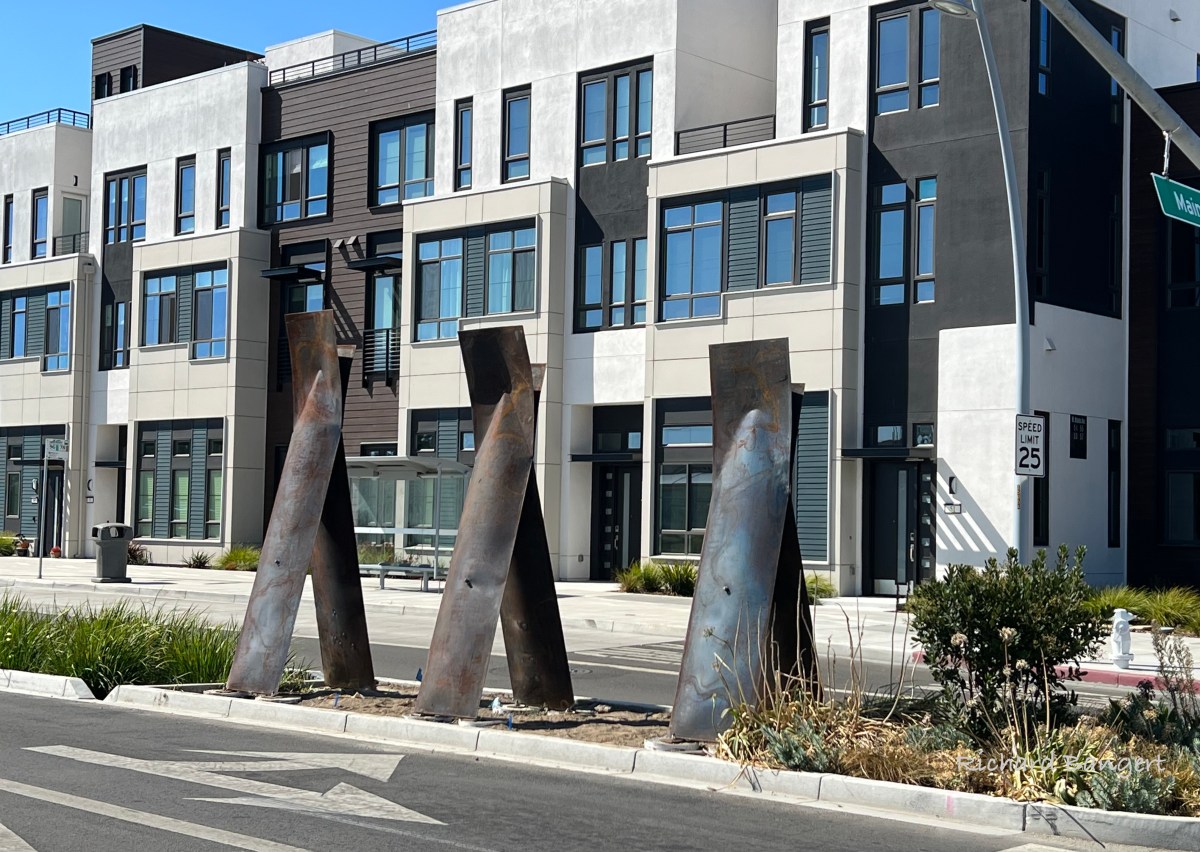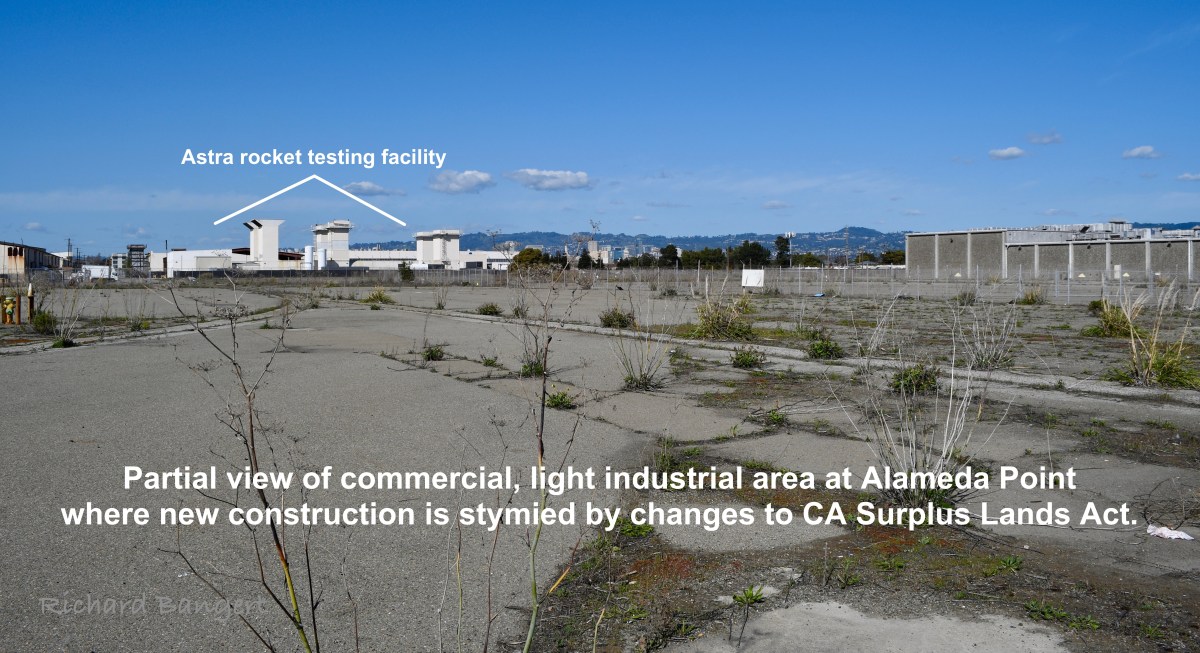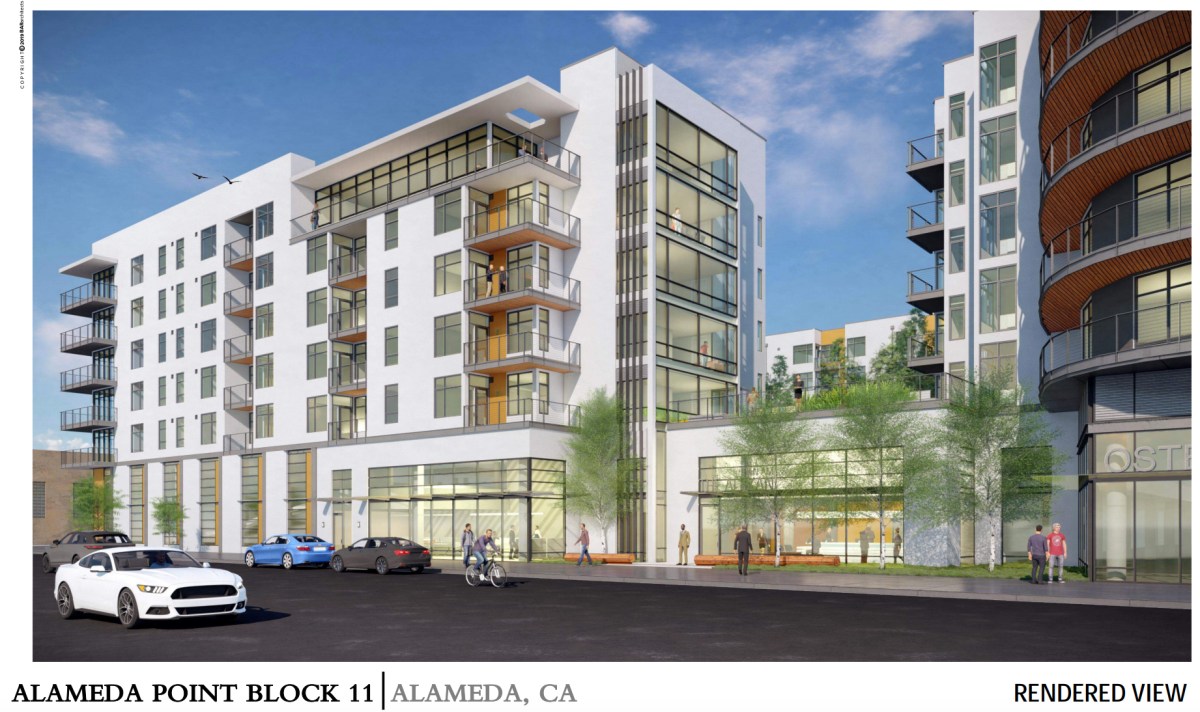Assemblymember Mia Bonta may again need to be called upon to fix a problem land use designation in Alameda.
There is a major strip of land, dubbed the Central Corridor, through the center of Alameda Point that is designated state “tidelands,” even though the open water tidelands were filled in by the Navy 80 years ago. According to the California State Lands Commission, tidelands are to be held in trust for the people of the entire state, allowing only maritime, resource protection, or visitor serving uses. “Uses that do not accommodate, promote, foster or enhance the statewide public’s need for essential commercial services or their enjoyment of tidelands are not appropriate uses for public trust lands,” states this Overview of Public Trust Doctrine.
Currently, City Hall West, two blocks of lawn, a fire station, a hangar, some buildings of limited value, a parking lot, and an empty block of tarmac occupy the “tidelands” corridor and serve no Tidelands purposes.
Continue reading “Tidelands designation frustrates development of Alameda Point”







